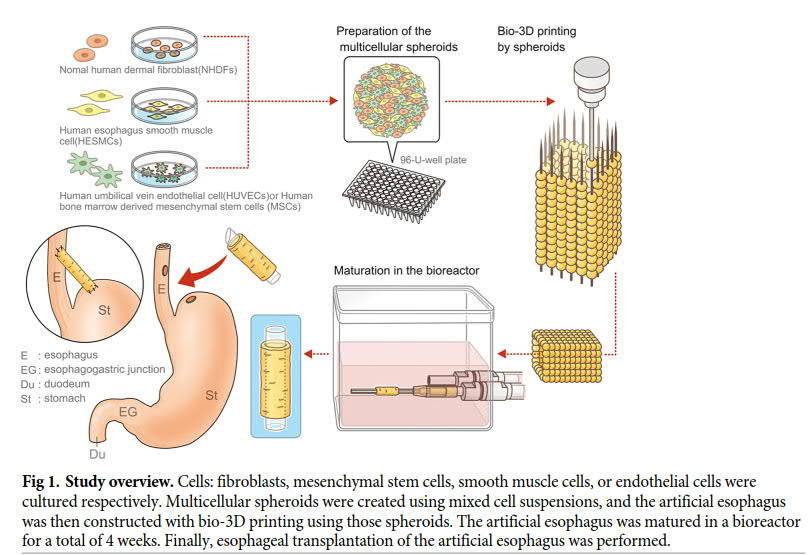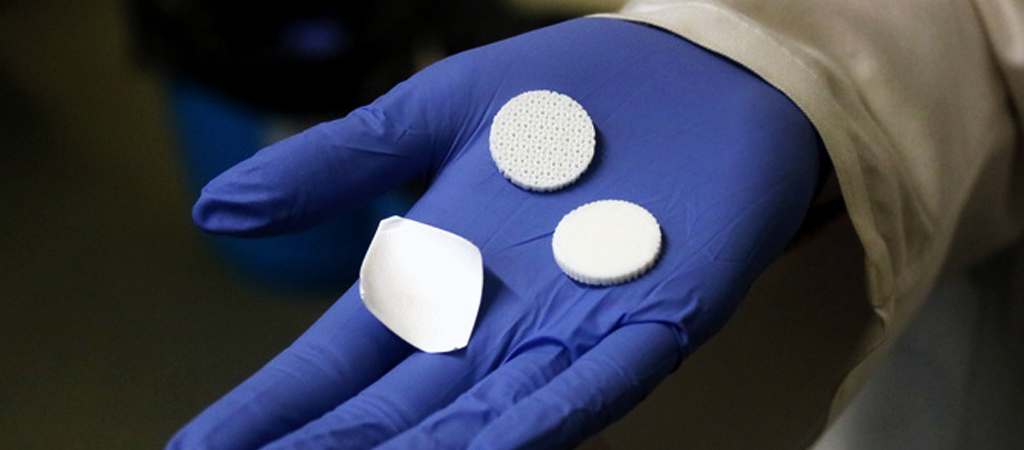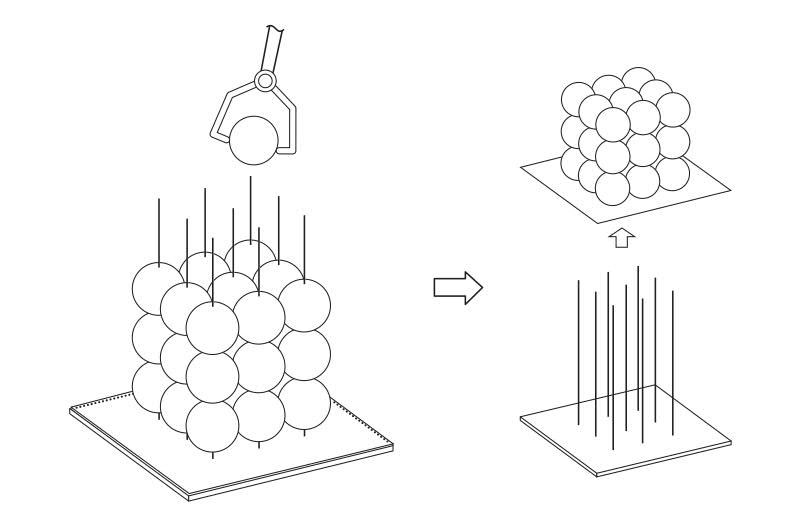Researchers from Nagasaki University and Saga University have collaborated to create scaffold-free esophageal structures with 3D bioprinting.
The findings of the research were published in the paper titled, Regeneration of esophagus using a scaffold-free biomimetic structure created with biothree-dimensional printing.
According to the paper, the results show that “the esophagus-like scaffold-free tubular structures created using bio-3D printing could hold promise as a substitute for the repair of esophageal defects.”

Regenerative medicine
Scaffolds, in tissue engineering, refers to extracellular structures made of biomaterials which are used for seeding cells. Scaffold-based transplantation usually involves three steps, finding a source of stem cells from patients, seeding the cells onto the scaffold that promotes cell proliferation, and lastly, surgically implanting the scaffold tissue inside the patient.
In tissue engineering and regenerative medicine scaffold-based solutions have been the norm. The benefit of such a method of transplantation against allotransplantation is that it does not rely on non-identical donors, who may not always be available. Furthermore, in allotransplantation, as an organ is harvested from an external donor, the body may reject the transplant. In contrast, scaffold-based transplantation harvest the cells from the patients own body.

Problems with scaffolding
Despite the benefits of scaffold tissue regeneration, problems, such as immunogenicity, scaffold degradation, and immune response, can occur.
In addition to this, scaffold-based treatments are also limited by materials that can be used to create scaffolds. Scaffold materials must be non-toxic, capable of maintaining mechanical properties required for tissue growth in the long term, and they should not induce an immune response.
To counter such problems in regenerative medicine, the Japanese researchers 3D printed scaffold-free structures to create tissue for transplantation. This work is built on the foundation laid in an earlier study called, In Vitro Biofabrication of tissues and organs, conducted at Saga University.
Multicellular spheroids
The researchers used a technique called spheroid cell aggregates or multicellular spheroid (MCS) to generate esophageal tissue structures.
In MCS method, distinctive cells are nurtured in a nonadhesive environment to allow individual cells to attach to each other. These cells come together due to a survival mechanism. Once the MCS’s are formed they are used as bioink.
In the recent study, the scientists used MCS method to create esophageal structures and transplanted them into 10 to 12-week old F344 male rats.

Needle array bioprinting
The MCSs were made of a mixture of human esophageal muscle cells, bone marrow stem cells, and umbilical vein cells.
To generate MCS, the researchers used a 9×9 needle Regenova bio 3D printer by the Tokyo-based company Cyfuse Biomedical. The Regenova is a “needle-array” system, whose stainless steel needles act as a skewer for the individual cell spheroids until the cells are fused together.
The scaffold-free structures were then transplanted between the esophagus and the stomach of the rats, supported by silicon stents. After the surgery, all the rats used in the study survived and none of them showed any complications.
The authors state in the paper, “The present study demonstrates the feasibility of using these structures for esophageal transplantation therapy. We successfully implanted the esophageal tubular structure into rats and found that it was well engrafted with its inner luminal surface fully covered by epithelial cells.”
Future of regenerative medicine
The use of 3D printing technology in biomedicine is reported often. Some of the recent contributions of the technology include the fabrication of complex spinal implants, bolus, and phantoms for radiotherapy.
The authors of the recent paper believe that their study research benefits in the treatment of esophageal diseases, such as esophageal cancer, which amounts to 1% of all cancer cases in the U.S.
The paper concluded, “Although this work is our initial step of the study for the esophageal structure made with bio-3D printing system, it may contribute to the development of treatment for esophageal diseases that require transplantation.”
“The structures created with bio-3D printing technology using a scaffold-free approach showed promise as a potential substitute for esophageal transplantation.”
The research discussed in this paper is titled, Regeneration of esophagus using a scaffold-free biomimetic structure created with biothree-dimensional printing. It was published in the open-access journal PLOS ONE. It was jointly authored by Yosuke Takeoka, Keitaro Matsumoto, Daisuke Taniguchi, Tomoshi Tsuchiya, Ryusuke Machino, Masaaki Moriyama, Shosaburo Oyama, Tomoyuki Tetsuo, Yasuaki Taura, Katsunori Takagi, Takuya Yoshida, Abdelmotagaly Elgalad, Naoto Matsuo, Masaki Kunizaki, Shuichi Tobinaga, Takashi Nonaka, Shigekazu Hidaka, Naoya Yamasaki, Koichi Nakayama, and Takeshi Nagayasu.
To learn more about the cutting-edge innovations in 3D printing subscribe to our 3D printing newsletter. For live updates join us on Facebook and Twitter.
Looking for a new career? Then look no further than our 3D Printing Jobs page.
Featured image shows a graphical representation of the experiment. Image via PLOS ONE.


